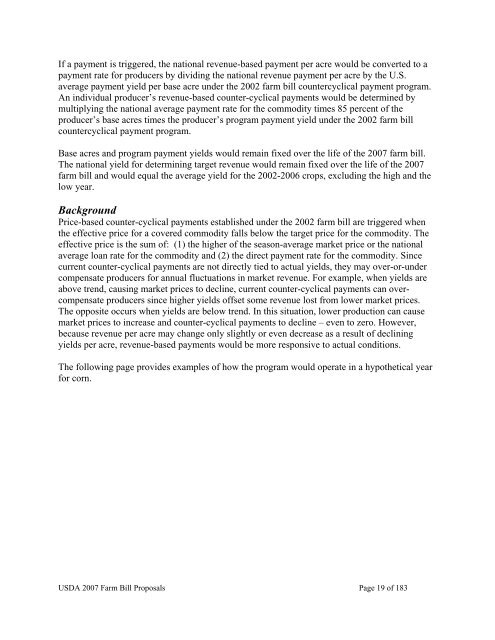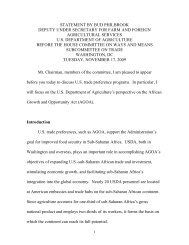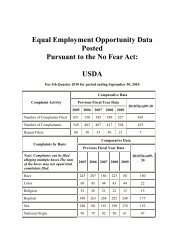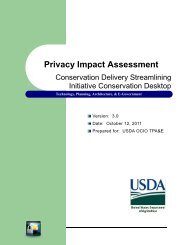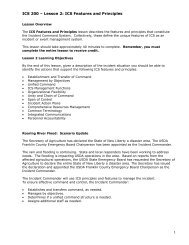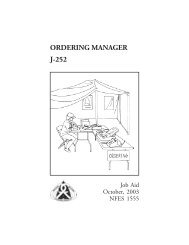USDA 2007 Farm Bill Proposals - US Department of Agriculture
USDA 2007 Farm Bill Proposals - US Department of Agriculture
USDA 2007 Farm Bill Proposals - US Department of Agriculture
You also want an ePaper? Increase the reach of your titles
YUMPU automatically turns print PDFs into web optimized ePapers that Google loves.
If a payment is triggered, the national revenue-based payment per acre would be converted to apayment rate for producers by dividing the national revenue payment per acre by the U.S.average payment yield per base acre under the 2002 farm bill countercyclical payment program.An individual producer’s revenue-based counter-cyclical payments would be determined bymultiplying the national average payment rate for the commodity times 85 percent <strong>of</strong> theproducer’s base acres times the producer’s program payment yield under the 2002 farm billcountercyclical payment program.Base acres and program payment yields would remain fixed over the life <strong>of</strong> the <strong>2007</strong> farm bill.The national yield for determining target revenue would remain fixed over the life <strong>of</strong> the <strong>2007</strong>farm bill and would equal the average yield for the 2002-2006 crops, excluding the high and thelow year.BackgroundPrice-based counter-cyclical payments established under the 2002 farm bill are triggered whenthe effective price for a covered commodity falls below the target price for the commodity. Theeffective price is the sum <strong>of</strong>: (1) the higher <strong>of</strong> the season-average market price or the nationalaverage loan rate for the commodity and (2) the direct payment rate for the commodity. Sincecurrent counter-cyclical payments are not directly tied to actual yields, they may over-or-undercompensate producers for annual fluctuations in market revenue. For example, when yields areabove trend, causing market prices to decline, current counter-cyclical payments can overcompensateproducers since higher yields <strong>of</strong>fset some revenue lost from lower market prices.The opposite occurs when yields are below trend. In this situation, lower production can causemarket prices to increase and counter-cyclical payments to decline – even to zero. However,because revenue per acre may change only slightly or even decrease as a result <strong>of</strong> decliningyields per acre, revenue-based payments would be more responsive to actual conditions.The following page provides examples <strong>of</strong> how the program would operate in a hypothetical yearfor corn.<strong><strong>US</strong>DA</strong> <strong>2007</strong> <strong>Farm</strong> <strong>Bill</strong> <strong>Proposals</strong> Page 19 <strong>of</strong> 183


